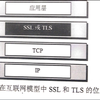Pseudo-labeling is a key component in semi-supervised learning (SSL). It relies on iteratively using the model to generate artificial labels for the unlabeled data to train against. A common property among its various methods is that they only rely on the model's prediction to make labeling decisions without considering any prior knowledge about the visual similarity among the classes. In this paper, we demonstrate that this degrades the quality of pseudo-labeling as it poorly represents visually similar classes in the pool of pseudo-labeled data. We propose SemCo, a method which leverages label semantics and co-training to address this problem. We train two classifiers with two different views of the class labels: one classifier uses the one-hot view of the labels and disregards any potential similarity among the classes, while the other uses a distributed view of the labels and groups potentially similar classes together. We then co-train the two classifiers to learn based on their disagreements. We show that our method achieves state-of-the-art performance across various SSL tasks including 5.6% accuracy improvement on Mini-ImageNet dataset with 1000 labeled examples. We also show that our method requires smaller batch size and fewer training iterations to reach its best performance. We make our code available at https://github.com/islam-nassar/semco.
翻译:在半监督的学习(SSL) 中, Pseudo 标签是一个关键组成部分。 它依靠迭代地使用模型来生成用于未贴标签数据培训的人工标签。 各种方法的一个共同属性是, 它们仅仅依靠模型的预测来做出标签决定, 而不考虑先前对各类之间视觉相似性的任何了解。 在本文中, 我们证明这降低了伪标签的质量, 因为它在伪标签数据库中代表的视觉相似类质量 。 我们提议 SemCo, 这是一种利用标签语义学和共同培训来解决这一问题的方法。 我们用两种不同的观点来培训两个分类者: 一个分类者使用标签的一流视图, 忽略各类之间任何可能的相似性 。 而另一个则使用分布的标签和组类可能相似性的视图 。 然后我们共同引导两个分类者根据彼此的分歧来学习。 我们显示我们的方法在各种 SSLL 任务中取得了状态的艺术表现, 包括5. 6% 准确性能提高我们Mini- ImageNet 的图像显示我们最小的方法 。




